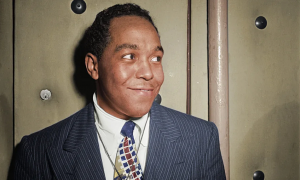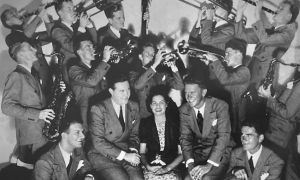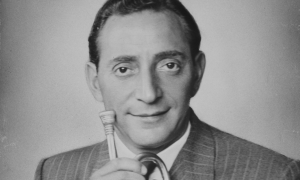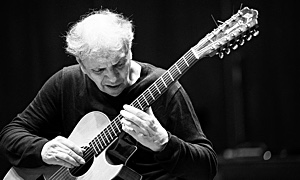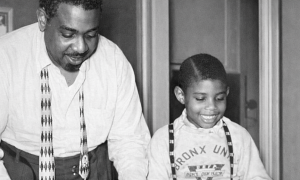Home » Jazz Articles » History of Jazz » Jazz in Cleveland: A Storied Past, Surviving Present, an...
Jazz in Cleveland: A Storied Past, Surviving Present, and an Optimistic Future

Musically-speaking, the region is often synonymous with The Rock and Roll Hall of Fame, disc jockey Alan Freed, and the world-renowned Cleveland Orchestra, but it has close ties to the evolution of jazz dating back to the 1920s. Beginning in the Jazz Age, Cleveland rivaled bustling Chicago with literally hundreds of clubs and eateries which featured the new music. Like many other cities at the time, Chinese restaurants were among the first to feature jazz with the Golden Pheasant, Bamboo Gardens, and Cedar Gardens (affectionately regarded as Cleveland's Cotton Club) restaurants presenting the music in the 1920's. From there until the 1960's, clubs like the Theatrical Grill, Lindsay's Sky Bar (which was the first to bring national jazz acts to the city), Gleason's, Alpine Village, the Loop Lounge, the Modern Jazz Room, the Jazz Temple, and many others presented the finest names in jazz from downtown all the way to the University Circle area located on the city's East Side. Sadly, these establishments began to dwindle as the public's musical tastes shifted and economic fortunes declined in the 1960's. Some speculate that violence that erupted at the Jazz Temple may have been the beginning of the end of jazz's heyday in the city.
Saxophonists Joe Lovano and Albert Ayler, pianist and composer Tadd Dameron, trombonist Jiggs Whigham and several other notable jazz musicians were born here. Clarinetist Artie Shaw spent part of his early career in the city stating that he learned how to arrange music here. Pianist Art Tatum performed in Cleveland clubs in the late 1920s after studying music in Toledo. A number of storied events in jazz history took place here: Bix Beiderbecke's historic meltdown in 1928, Django Reinhardt's first American performance in 1946, the 1953 birth of the college jazz concert occurred at Oberlin College with the Dave Brubeck Quartet. Founded in 1893, the H.N. White Company produced the King brand of musical instruments within the city. King would provide state of the art professional instruments for many of the top jazz musicians for decades until they moved to their Eastlake, OH location in 1968, effectively ending their era as one of the top musical instrument manufacturers. Despite all of these things, perhaps the area's greatest gift to jazz lies in two lesser-known individuals. Although born in Washington, D.C., composer Will Marion Cook studied music at Oberlin College in Northeast Ohio. He is credited as the first to use the saxophone in popular music, hiring none other than Sidney Bechet to weave improvised solos throughout his arrangements on a European tour in 1919. While this music was not necessarily jazz, it laid the groundwork for the use of the instrument in jazz from that point forward. Cook also had a brief, yet profound effect on the musical development of Duke Ellington during his early days in New York. The other was bandleader and vocalist Noble Sissle who moved to Cleveland as a teenager with his family in 1906. Interestingly he became one of the city's first civil rights activists when he was awarded $50 after filing suit against a Cleveland Theatre for mandating that he sit in the balcony while his white comrades were allowed to sit in the lower level. Sissle would graduate from Central High School in town before going on to form by some accounts the first African-American orchestra to perform for all white audiences in Indianapolis and then help his friend James Reese Europe form the regimental band for the famed New York 369th Infantry "Hell Fighters" that consisted mainly of African-American soldiers. That band performed a unique version of ragtime that would help popularize jazz all over Europe at the time.
Despite the decay in popularity of this music that took place in the city's culture during the late 1960's, jazz found a new home in the decades that have followed where it has lived since. Ohio is home to 111 universities, ranking 6th in the United States, many of which are located in the general Northeast Ohio area and many of which have moderate to outstanding general music and jazz studies programs. Nationally-recognized Dana School of Music at Youngstown State University, the Cleveland Institute of Music, the Baldwin Wallace Conservatory of Music, Case Western Reserve University, aforementioned Oberlin College, The University of Akron, Kent State University (my alma mater), Bowling Green State University, The Ohio State University in Columbus, Cleveland State University, Cuyahoga Community College, Lakeland Community College and a host of other smaller institutions are all within about a two hour driving distance of the city of Cleveland. It is within these institutions where jazz has found a new breeding ground to harbor and nurture ambitious talent in the region. While the general public focuses on the next Taylor Swift or Drake release, in these schools a small but dedicated brotherhood of students hone their abilities and hope to continue the language of jazz well into the 21st century. It was out of this general fraternity of musicians that the Cleveland Jazz Orchestra (CJO) was formed in the 1980's. Flaunting a roster of the area's finest talent well versed in tradition, the famous big band has been a staple of the jazz community in Cleveland since its inception and its members comprise the music faculty of a number of these institutions.
Unlike eras past, there are now few places to perform the music, but those that do have garnered national attention as some of the finest jazz venues in the world. Bop Stop at The Music Settlement, Nighttown, and recently Blu Jazz+ in Akron have all been ranked by various publications as some of the crème de le crème jazz clubs the world has to offer. Opening in 1991, the Bop Stop was created by vibraphonist Ron Busch and it helped jazz find a resurgence in the city during the '90s. It has since relocated two separate times and now finds its home in an upscale, acoustically-pleasing building on the West Side that was constructed entirely for the purpose of showcasing the music on a nightly basis. Since 2014, the venue has been operated as a nonprofit organization run by The Music Settlement to whom it was donated. This has proven to be a fortuitous arrangement for the venue, the music, and the city during the pandemic as it has allowed the music to continue to have a spotlight via livestream despite a considerable amount less revenue being generated. Although it opened in 1965, Nighttown on the East Side did not become a hallmark for the music until 1999, when its new owners shifted focus and began showcasing a number of A-list touring jazz stars. A fine dining restaurant boasting an elegant demeanor and an eclectic bill of fare, it has unfortunately been closed for much of the pandemic and now faces an uncertain fate, having been recently sold once again to new ownership. Also closed temporarily due to the pandemic, Akron's Blu Jazz+ has quickly found a devoted audience of music-loving Akronites as well as the jazz and blues musicians themselves who frequent the twice-weekly blues and jazz jam sessions. Getting its start showcasing area talent, it, too, now features a number of touring acts drawing national attention. Its ambitious entrepreneurial owner Tony Troppe has even opened an accompanying Blu-Tique hotel in downtown Akron. Although both are not jazz-specific venues, The Brother's Lounge located about five miles West of Cleveland and Jilly's Music Room in Akron's Northside District feature a number of professional jazz and blues acts throughout their weekly concert schedules and offer concertgoers classy surroundings with outstanding cuisine. Like much of the region, both have been closed for music during the pandemic, however Jilly's has offered online fans a number of livestreamed concerts.
Started in 1980 and run by the city's Cuyahoga Community College (Tri-C), the Tri-C JazzFest has emerged as one of the premiere jazz festivals held in the United States. What is now roughly a three day affair, regional professional acts are featured throughout the day under a large outdoor stage that's located directly below Cleveland's extravagant architectural pièce de résistance, the world's largest outdoor chandelier in Playhouse Square downtown. By night, world-renowned jazz favorites are featured in evening concerts inside the various ornate theaters the district has to offer. The Rubber City Jazz & Blues Festival in Akron is quickly emerging as a destination event in late Summer each year since it began in 2016. The brainchild of educational nonprofit organization Open Tone Music, the festival invades downtown Akron showcasing a plethora of the area's finest musicianship in a number of the area's establishments. Both of these festivals, as well of a multitude of other general music festivals and outdoor concert series in Ohio were delayed or canceled in 2020 due to world events, but look to resume once the pandemic has ended.
As a contributing member to this city's musical footprint, I am proud to call Cleveland home and I am proud of the many contributions that my musical brethren have made and are continuing to make. Despite the cliché that jazz is dead, it is not. Not only is it alive and well, but I am overwhelmingly optimistic that it still has new heights yet unseen that will forge its way back into the heart of mainstream music. Human fads are cyclical and while watered-down studio-magic pop acts may be "in" today, the public will look for something different tomorrow. Some of this is already evident in a number of popular recordings since the 2000's began with saxophone and horn sections once again finding their way into popular culture. That said, if Cleveland is going to continue to be relevant in jazz's evolution then Clevelanders must challenge one another to look ahead and embrace a future that may not resemble the one of eras past while still remembering the rich tradition of the music and the city. Miles Davis said in his autobiography, "Bebop was about change, about evolution. It wasn't about standing still and becoming safe. If anybody wants to keep creating they have to be about change." As America poignantly thrusts out of this pandemic, there is great uncertainty in regards to the future of live music at large. Many establishments, festivals, and touring spots that we have taken for granted as supporters of the music may not survive and the ones that do may no longer be able to operate in the same capacity. However, with technology rapidly propelling humanity forward there will certainly be new opportunities that unfold. I implore my fellow Northeast Ohio musicians and music lovers to hold your heads high and display unbounding hope for tomorrow. I ask the world to be on lookout: groundbreaking jazz from the CLE is at your door.
Tags
Profile
Dominick Farinacci
Matthew Alec
United States
Ohio
Cleveland
Akron
Chicago
joe lovano
Albert Ayler
Tadd Dameron
Jiggs Whigham
Artie Shaw
Art Tatum
Toledo
Bix Beiderbecke
Django Reinhardt
Dave Brubeck
Will Marion Cook
Sidney Bechet
duke ellington
Noble Sissle
Indianapolis
James Reese Europe
Columbus
Cleveland Jazz Orchestra
Bop Stop
nighttown
Blu Jazz+
Ron Busch
Tri-C JazzFest
Rubber City Jazz and Blues Festival
Miles Davis
PREVIOUS / NEXT
Support All About Jazz
 All About Jazz has been a pillar of jazz since 1995, championing it as an art form and, more importantly, supporting the musicians who make it. Our enduring commitment has made "AAJ" one of the most culturally important websites of its kind, read by hundreds of thousands of fans, musicians and industry figures every month.
All About Jazz has been a pillar of jazz since 1995, championing it as an art form and, more importantly, supporting the musicians who make it. Our enduring commitment has made "AAJ" one of the most culturally important websites of its kind, read by hundreds of thousands of fans, musicians and industry figures every month.










